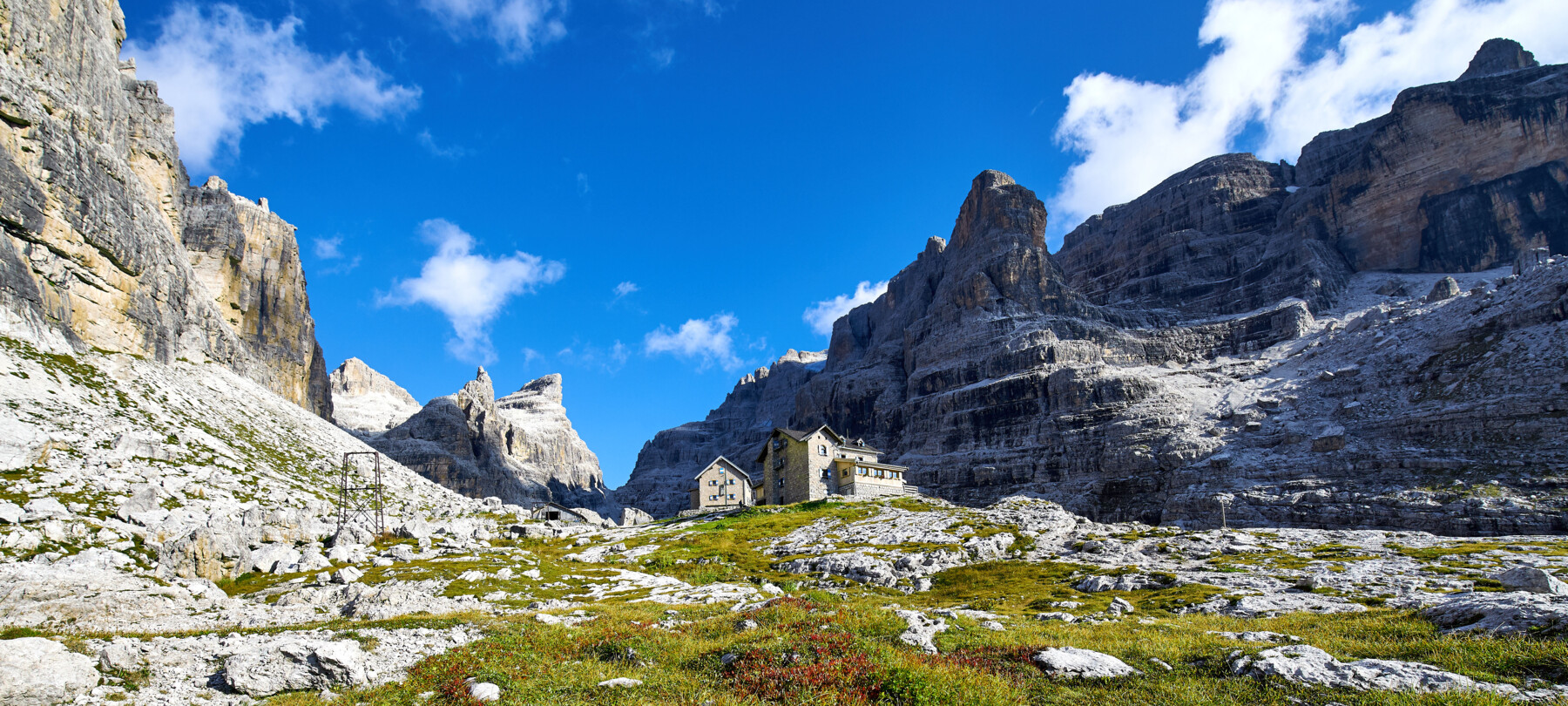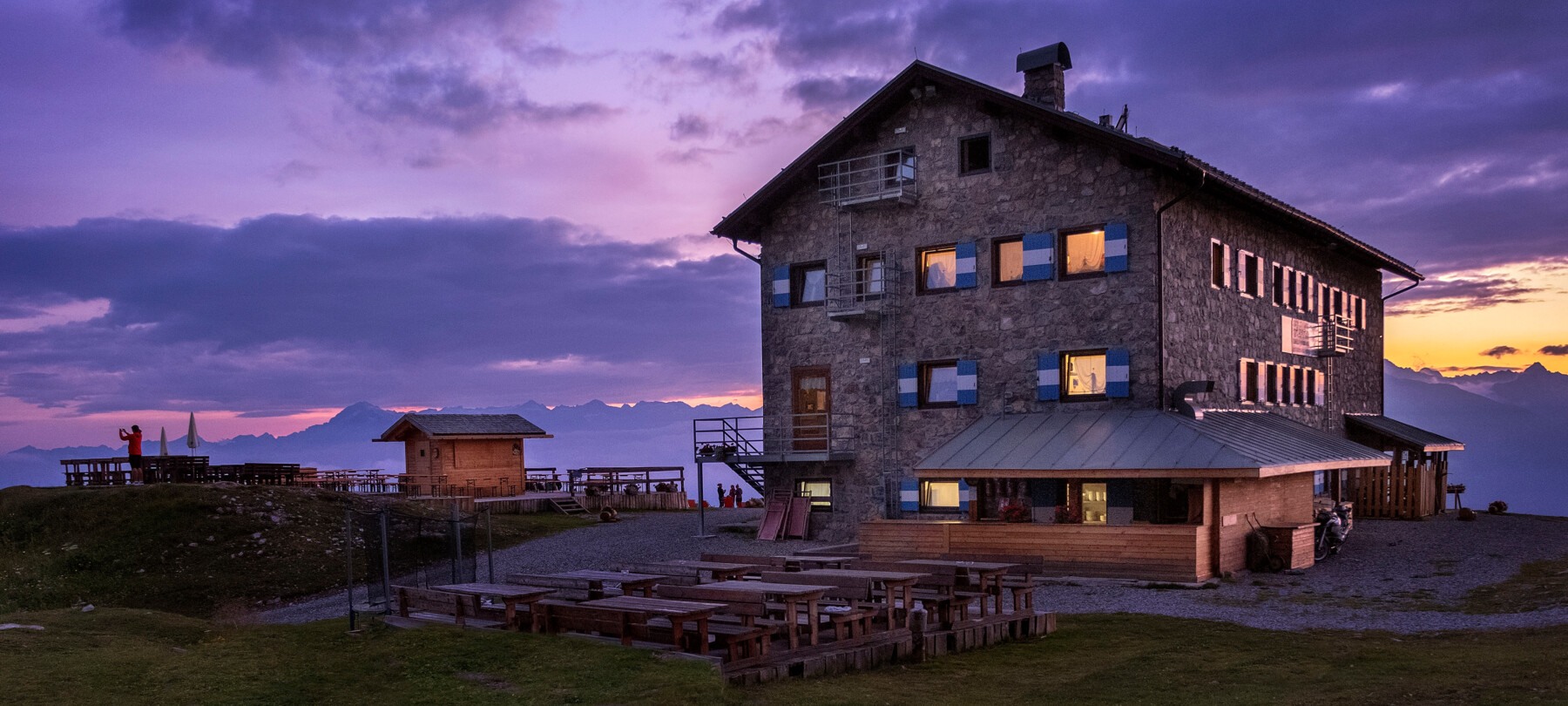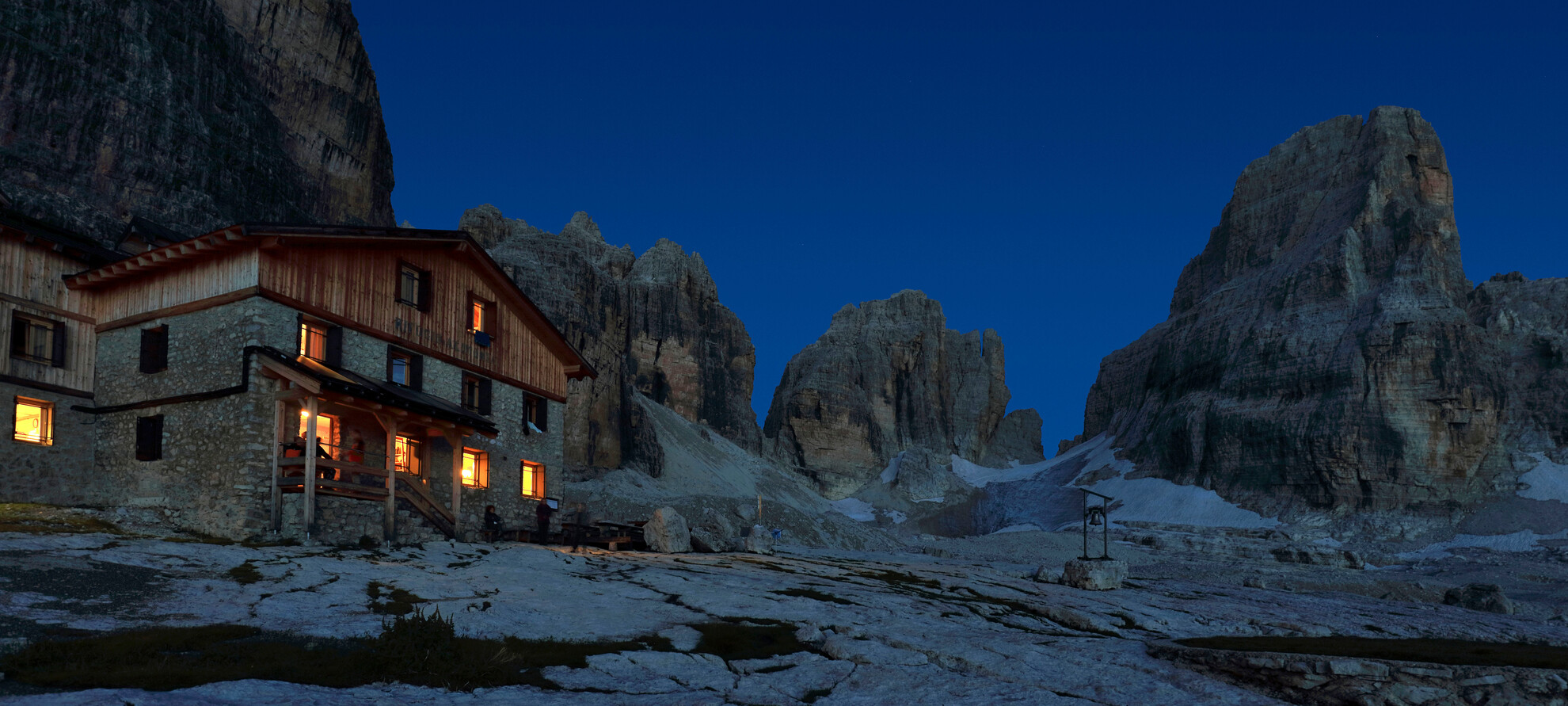A lodge at every stop
The lodges of the Brenta Group bear the names of Alpine explorers
The mountain lodges of the Brenta Group pay tribute to the names and histories of the great mountaineers of this massif, who accomplished feats thought impossible in their own times. On the Via delle Normali — the combined climbing and trekking route that connects ten peaks of the Brenta Dolomites in six stages — lodges are essential landmarks, where you can replenish your energy and plan your itinerary.
Here are a few you should know about.
Before setting out on an excursion at altitude, plan your trip with care. If you are inexperienced or you intend to tackle a route graded as technically difficult, then consult an alpine or mountain guide. You should also contact the refuge warden in the area you’ll be visiting for the latest weather information and to discuss whether your route is advisable. Take prudent precautions, wear suitable clothing for your route, and remember to act responsibly in the mountains at all times.

The Alimonta Lodge
After climbing the Torre di Brenta at the end of the third stage of the Via delle Normali, the most convenient place of refuge is the Alimonta Lodge. Sitting in one of Trentino’s largest dolomitic hollows, at the base of the Vedretta degli Sfulmini — one of the trickiest passages to get to the Via delle Bocchette — the lodge was opened in 1968 by Ezio and Gilio Alimonta.
Ezio, together with Cesare Maestri, was also the first to ascend the challenging Spallone Sud crest of Campanile Basso, a VI+ grade peak which they conquered by free climbing. You won’t want to miss out on spending a night here, placing your hands and feet where theirs once passed.

Tuckett Lodge
Another place of refuge for stages 4 and 5 is named in honour of Tuckett. Back in 1904, Italian and German mountaineers were engaged in a sort of rivalry and above Vallesinella Alta, there were many mountaineers grappling to resolve a range of different “problems”. It became necessary to construct a lodge so that they would have a place to stay, rather than being obliged to spend the night in the open.
The first building you will come across on your way from Bocca di Tuckett is actually the Quintino Sella Lodge, founded in 1904 and named after the first president of the Italian Alpine Club. The Tuckett lodge itself is the next building, named in honour of the first climber to reach the peak of Cima Brenta and a major mountain explorer in the Dolomites. The Tuckett lodge was founded by Germans of the Berlin chapter of the D.u.Oe.A.V in 1906.

Grosté Lodge
Your place of refuge on the final stage of your journey across the Brenta Dolomites is the Grosté lodge, situated below the pass of the same name, Pietra Grande and Pietra Vagliana. From this lodge, you’ll be able to see all the peaks you’ve scaled on your journey along the Via delle Normali.
These places were particularly dear to the Trentino mountaineer Giovanni Graffer. When he was 14 years old, Graffer scaled Campanile Basso for the first time with his sixteen-year-old sister — earning the admiration of the mountaineer Tita Piaz, the “Diavolo delle Dolomiti” (Devil of the Dolomites) — across one of the most difficult ways of the time: the Preuss.
One of his most famous climbs took place in 1934, when he scaled the Spallone of Campanile Basso alternating between boots and bare feet — climbing shoes did not exist at the time — along an impossible path, which is now classified as grade V and VI.
Plenty of other famous names have also conquered the Brenta peaks: we recommend thumbing through some of the many books you’ll find in the lodges to learn the moving and inspiring stories told by these great climbers. Every normal way you climb has its own story and anecdotes, which will often be useful to you when finding the determination you need to overcome their challenges.

Via delle Normali
More

